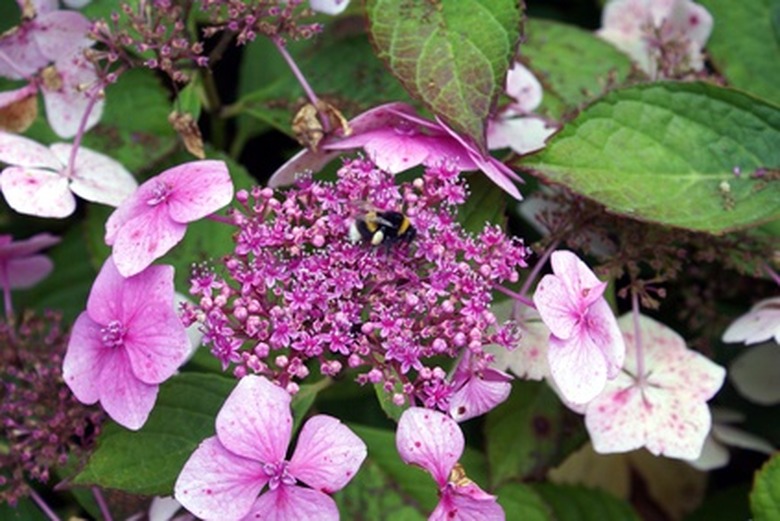How To Prune Hydrangeas In California
Hydrangea shrubs thrive in climates of USDA Zone 6 and above. This makes them ideal landscape plants for nearly all regions of California, except for very small areas on the northeast tip of the state bordering Nevada. Hydrangeas are deciduous and benefit from annual pruning to encourage new growth, to remove damage and to control the size and shape of the shrub when needed. Annual pruning for hydrangea shrubs growing in California should generally be conducted in the fall or early winter once all of the flower heads have died back or when they begin to look shabby in the landscape.
Step 1
Remove any dead flower heads down to the parent stem, being the green or wood stem from which the flower stem emanates. Place all cuts on the bias with clean, sharp pruning shears. Cut back any dead, diseased, damaged or otherwise compromised branches and foliage, discarding them.
- Hydrangea shrubs thrive in climates of USDA Zone 6 and above.
- Annual pruning for hydrangea shrubs growing in California should generally be conducted in the fall or early winter once all of the flower heads have died back or when they begin to look shabby in the landscape.
Step 2
Prune away a third of the oldest branches each year to spur production of new flowering branches. Distribute the pruning cuts evenly throughout the shrub to maintain the natural architecture of the hydrangea. Place cut down to the main trunk or to the ground, depending on your species of hydrangea.
Step 3
Reduce the size or alter the shape of the shrub if desired and as needed, by cutting back the branch tips to the desired length. Prune macrophylla and oakleaf hydrangea species for size in the late summer immediately after bloom. Prune panicle, climbing and smooth leaf hydrangea species for size in the fall or winter.
Hydrangeas
Designate a planting site with organically rich, well-drained soil. Spade or rotary-till the amendment into the soil for even incorporation. If you're uncertain about when to irrigate, water when the top 3 or 4 inches of soil is dry to the touch. Sprinkle a balanced, 10-10-10 granular fertilizer on top of the soil in March and May and after the hydrangeas flower. Frequent, severe pruning results in weaker plants. Leaf-spot fungi cause purple-margined, gray or brown lesions. Removing and destroying infested plant parts controls powdery mildew. Raking up fallen, diseased foliage and putting down a 3- to 4-inch layer of organic mulch prevents leaf-spot spores from splashing the shrubs.
- Prune away a third of the oldest branches each year to spur production of new flowering branches.
- Distribute the pruning cuts evenly throughout the shrub to maintain the natural architecture of the hydrangea.
Things Needed
- Pruning shears
- Pruning loppers
Tip
Avoid pruning your hydrangea in the spring. While it will not harm the shrub, it will diminish the flowering wood and buds available for the current season's bloom cycle.
References
- Fine Gardening: Hydrangea Arborescens "Annabelle"
- Monrovia: "Golden Crane" Hydrangea
- 1979 Sunset New Western Garden Books; David E. Clark
- University of California Cooperative Extension: How to Grow Hydrangeas in the San Joaquin Valley
- University of Massachusetts Center for Agriculture: Landscape, Agriculture & Urban Forestry Program — Growing Hydrangeas
- Clemson Cooperative Extension: Hydrangea
- University of California Cooperative Extension: Pruning Hydrangeas
- Fine Gardening: Hydrangea Paniculata
- Fine Gardening: Hydrangea Arborescens
- Monrovia: Endless Summer® Hydrangea
